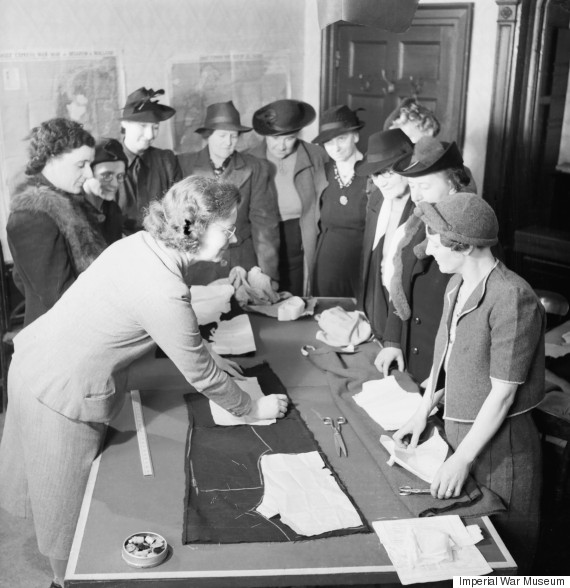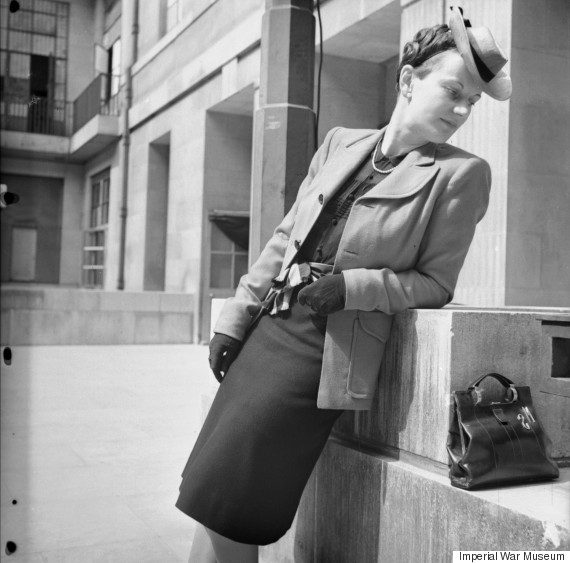
This October, I'll be speaking at Imperial War Museum North on fashion and sustainability with journalist and author Lucy Siegle.
The museum's latest exhibition Fashion on the Ration: 1940s Street Style looks at the creative and thrifty responses to clothes rationing during the Second World War. Not only were the clothes of this time a triumph in colour, creativity and durability, there are some real lessons we can learn from the era where make do and mend was a necessity.
Being thrifty is not just about being ethical, it is about saving money. I'm currently wearing a pair of shoes that I bought second hand around 25 years ago. I polish them, replace the heel when I know it needs doing and I look after them. Why waste money on something new when you could save it and eat better or put money aside to help give your children get a start in life? My Nan looked after everything fastidiously, made everything last and repurposed whatever she could half a century before current buzzword 'upcycling' became ubiquitous.

There is a sense of pride in doing something yourself. Back in the 1940s, there was a real sense of competition about making things out of what you had and that pride in saying, "I have made this myself and I know I look great." If you can make something on a shoe string using intelligence and a bit of elbow grease then there's a real sense of achievement in that. If we lose that then I think you lose something as a human being and it has been lost by many in this throw-away society we live in.
Don't be seduced by things that will go out of fashion in six months. Even the bosses at Vogue admit in the current fly on the wall TV series that clothes often don't change, they are just repackaged. A straight leg trouser is always going to be a slight variation on the last straight leg trouser that was in the collections, a pencil skirt is always going to be a pencil skirt - nothing radically changes, it's how you style it all that matters. In the 1940s they didn't have any option other than to creatively restyle what they already owned.
Buying clothes can be a moral and ethical act. Research the provenance of where your clothes have come from. Ask retailers where they are made and where the materials come from, and if they don't know the answers then embarrass them. Be a pain!
I have four kids and growing up I used to fine them 50 pence if they walked out a room and left the light on. It was done in a humorous way, but now I definitely have four kids who are aware of the environment and have become politically engaged. I don't want to be part of a consumer society that has people working in factories in Bangladesh where the building collapses on them. I don't want a world where children are making my clothes in terrible working conditions. We can all help put an end to this by demanding to know the provenance of what we consume.

Durability was one of the highest qualities which traditional manufacturing used to pride itself in but it has been forsaken in favour of fashionable gimmicks and fast turnaround. We are however entering an exciting new era, (albeit forced on a millennial generation by their parents' generation) where thrift and the values associated with rationing are being embraced by less wasteful and environmentally aware generation. I hope this generation are prepared to demand that durability be put back on the agenda as an essential ingredient for sustainability.
Wayne Hemingway and journalist and author Lucy Siegle will speak on Fashion and Sustainability at Imperial War Museum North on Wednesday 5 October at 7pm. Hemingway and Siegle will discuss fashion and sustainability, taking lessons from the Second World War as a starting point to discuss modern challenges and modern solutions. For more information, click here
Fashion on the Ration: 1940s Street Style explores how fashion survived and even flourished under the strict rules of rationing and how despite the restrictions, austerity did not put an end to creative design or fashionable trends on the British home front. This exhibition is on display at IWM North until May 1 2017. For more information, click here
This September The Huffington Post UK Style is focusing on all things sustainable, for the second year running. Our thirst for fast fashion is dramatically impacting the environment and the lives of thousands of workers in a negative way. Our aim is to raise awareness of this zeitgeist issue and champion brands and people working to make the fashion industry a more ethical place.
We'll be sharing stories and blogs with the hashtag #SustainableFashion and we'd like you to do the same. If you'd like to use our blogging platform to share your story, email ukblogteam@huffingtonpost.com